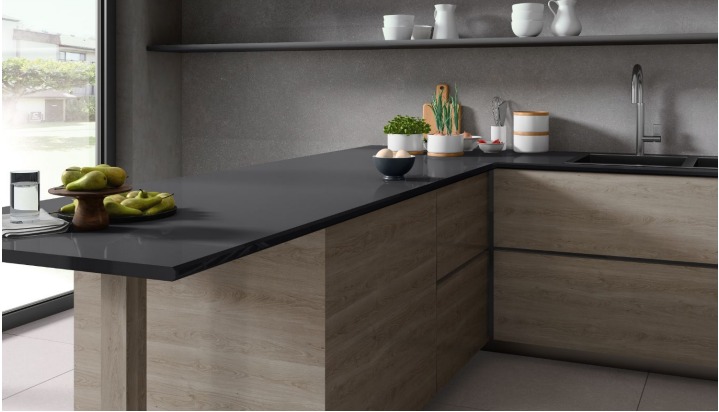
Ceramic Kitchen Tiles
Ceramic Kitchen Floor Tiles: Easy-Clean, Stain-Resistant Ideas
Choosing the flooring is one of the most crucial decisions you'll make when building or remodeling your kitchen. A kitchen floor needs to be able to handle a lot of foot traffic, grease, spills, and heavy equipment while looking nice in your home. Choosing the right kitchen tiles ensures they are safe, durable, and aesthetically pleasing.
This lesson will teach you what to consider while picking the best kitchen floor tiles for your home.
Kitchen-specific performance needs
The kitchen is not like any of the other rooms in the house. When picking up floor tiles, these are the most significant performance factors to keep in mind:
Foot traffic and durability: Kitchen tiles must be able to withstand a significant amount of foot traffic without scratching or denting.
Stain-free: Water, oil, and sauce spills shouldn't leave stains or cause the tiles to swell; therefore, the tiles need to be non-porous.
Safety: Safety is the most crucial item. Thus, it's essential that things don't slip. Tiles that don't slip are the best, especially in households with children or older adults.
Durability: Tiles must be able to withstand objects that are very hot and heavy, such as pans dropping and refrigerators rolling.
Tip: Always check the tile's PEI (Porcelain Enamel Institute) rating. Tiles with a PEI rating of 3 or higher are suitable for use in kitchens.
Finishes for grease & spills
The shine on your tiles is highly essential for both their appearance and functionality. It's crucial for kitchens to find the right balance:
1. Tiles with a dull finish
- Not slippery and not shiny.
- Conceals stains, grime, and water marks.
- Good for families that are busy.
2. Use a satin or semi-matte finish
- Provides a soft gloss that doesn't make the floor slippery, unlike shiny tiles.
- It's easier to clean than matte, yet it still works in oily places.
3. Tiles that are glossy
- Make small kitchens seem bigger.
- It's easy to wipe up spills, but it may be slippery when wet, so it's better for backsplashes and kitchen walls than floors.
Pro Tip: Textured surfaces are better at hiding oil stains and provide a greater grip than smooth, gleaming tiles.
Format, layout & grout selection
The way tiles are arranged and their size can affect how they appear and how effectively they function in kitchens.
The form and size of tiles
- Large tiles (60x60 cm, 80x80 cm): Use less grout to achieve a more modern and smooth appearance. Good for kitchens that are open.
- It's easier and cheaper to put up standard tiles (30x30 cm or 40x40 cm) in compact kitchens.
- Plank-style tiles look like wood flooring, but they're composed of ceramic, which makes them quite robust. They work great in both modern and rustic kitchens.
Grout is very crucial
Minimal Grout Lines: Tiles with large formats and rectified edges have fewer grout joints, which means less debris can be caught.
Use epoxy or stain-proof grout: This helps to clear up grease and curry spills without leaving a mark.
Colour Matching: Neutral grout helps the floor look smooth, while contrasting grout makes it look robust.
Pro Tip: Plan layouts with fewer cuts around cabinets and appliances to have a cleaner, longer-lasting finish.
Cleaning routines that work
Even the most beautiful kitchen floor might lose its charm if you don't take care of it. Ceramic and porcelain tiles are easy to maintain if you clean them regularly.
Cleaning Every Day
- Use a broom or vacuum cleaner to remove dirt and crumbs.
- Use a damp mop with a small amount of soap to prevent grease from building up.
Cleaning every week or every month
- Use a steam mop or tile cleaners that don't modify the pH.
- Stay careful with bleach or other harsh agents that could damage the finish.
Removing Stains
- For oil stains, try using a paste made of baking soda or a gentle degreaser.
- If you have spice stains (like turmeric), use diluted vinegar, but rinse it off soon.
- Use a microfiber cloth to rub out the water spots.
Pro Tip: Seal your grout every 6 to 12 months to keep it clean and stain-free.
Frequently Asked Questions
1. Which is easier to take care of, satin or matte?
Satin finish tiles are easier to clean than matte finish tiles, but matte finish tiles hide dirt and smudges better. In kitchens that receive a lot of wear, matte or satin finishes work better than shiny ones.
2. What sizes make grout lines less noticeable?
Large-format tiles (60x60 cm or larger) make the kitchen look sleek and modern by reducing the number of grout lines. Straight-edged rectified tiles make joints increasingly harder to see.
3. Can you safely install heavy appliances on ceramic floors?
Yes, high-quality ceramic or porcelain tiles, when installed correctly, can easily withstand the weight of dishwashers, stoves, and refrigerators without shattering.
4. How can I best get rid of oil stains?
Blot up the oil spill immediately, then sprinkle baking soda on top and let it absorb the grease. Next, use warm, soapy water to gently scrub it. Don't use bleach or strong acids.
Final Thoughts
It's all about getting the right kitchen floor tiles that look good and work well. Because the kitchen is a high-stakes area, your tiles need to be robust enough to withstand daily use and enhance the overall appearance of the room.
Order The Most Suitable Tiles Now!
At Qutone Ceramics, we go beyond just offering tiles! We provide kitchen flooring solutions designed for real-life use. Our collection features slip-resistant and highly durable tiles that can handle everyday spills, heavy appliances, and constant foot traffic. With an array of elegant finishes, patterns, and modern designs, you can create a kitchen that’s not only safe and practical but also beautifully aligned with your lifestyle and home décor.

Write a Comment